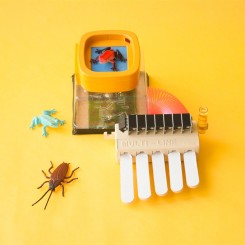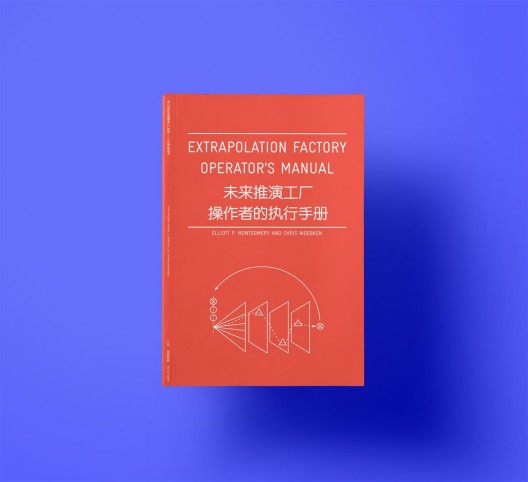This piece is included in Ran Dian’s print magazine, issue 4 (Winter 2016–2017)
The future is inherently democratic—by nature, it is not yet and no-one’s. Thinking about the future has evolved differently, however; envisioning what might be is niche work normally reserved for “professional futurists” in the small worlds of academia and industry, for example through speculative design.
This state of affairs in 2012 provoked Elliott Montgomery and Chris Woebken to start the Extrapolation Factory—in its own words on the website: “an imagination-based studio for design-led futures studies”—against a backdrop of artistic practice, strategic design, and education. They have since been working on a number of different projects and outreach while honing the expression of their aims, mindful of a remark attributed to speculative fiction author William Gibson (in The Economist, Dec. 4, 2003): “The future is already here—it’s just not evenly distributed.” Published this summer, the Extrapolation Factory Operator’s Manual is part-manifesto, part guidebook, part exposition, reflection, and invitation: future thinking for non-futurists.
The book is bilingual in English and Mandarin. Aside from the tempting thought that Chinese characters might be attractive to the design-inclined eye, Woebken and Montgomery for their part mention that this is a start in making their ideas more accessible both outside academia and also beyond a western bias in the speculative design community connected with the Royal College of Art in London—recently the subject of some critique, according to Elliott (in a recent interview with Fei Liu for the podcast TRYTOBEGOOD on Bel-Air Radio, New York). The Extrapolation Factory’s approach includes workshops where cheap, everyday items are invoked as potential forecasters (for instance as material or as indexes of desire) of future products. The project “99c Futures” took as a starting point the eccentric and sometimes anachronistic character of items (or “artifacts,” as they call them) in Brooklyn convenience stores, many of which are made in China. The project thus has its connections with an aesthetic interest (among both Chinese and foreign artists, from net artist Miao Ying to Shanzhai Biennial co-founder Item Idem) in Shanzhai products and daily hacker culture prevalent in, though not unique to, China. To offer the book to Mandarin readers as a priority also recalls imperatives in the earlier 2000s to instigate “designed in China” to counteract the famed product stamp—now, a step is made to bring this towards speculative design. While the Manual’s references to China simultaneously as a source and a developing site feel slightly flown-in, they are well-intentioned and driven by curiosity, without pretense to knowledge of the Chi-nese environment.
As with any manifesto, rhetoric is important. A manual signals a machine, and to paraphrase Le Corbusier, the Extrapolation Factory sees itself a machine for thinking about the future.1 Woebken and Elliott think of the book as a guide to “best practices,” arguing that it is worth addressing the future in real terms with diagrammatic approaches and practical experiments that might bring us closer to an authentic and tangible notion of what it might be like. Though it will always be a leap of imagination, the strategies offered here attempt to corral the suspension of disbelief necessary to peer beyond the immediate present. To help, there are diagrams like the Futures Cone designed by Joseph Voros connecting possible, plausible, probable, and preferable outcomes with perspective and context, and the Extrapolation Factory’s own “Future Scope”, a lens-like diagram for envisioning the future based on what is already present and accessible: choose a scenario, consider its probability in the future, think about needs this might create, then design a product; your materials are things that already exist. In the view of the authors, placing a “future artefact” among real ones in an existing 99c store means that “The future doesn’t seem so far away.” Whether such items are at all convincing (one participant made a “Trip-O-Critter: Create Your Own Lifeform”) is of course another question, and accounts for calling this last stage of imagination and making “storytelling”.
While fluent and democratically-minded, the Manual often speaks in rather convoluted language (“participants select future scenarios from a curated instance database”), and one detects what might be a design-community sense of humor (note the Near Future Laboratory Collective’s “Design Fiction Design Brief Creation Playing Cards” on page 49). Still, the desire to coax imagination of the future back into the present has a certain poetic quality familiar from speculative fiction, as do some of the ideas (an Extrapolation Factory “future junk mail machine” in 2013 spewed spam for DreamTube broadcasting and artisanal GMOs); the liberation of every day products from their designated functions so that the experience of shopping itself is changed marks an aesthetic attitude, too. But one doesn’t forget that at the heart of the exercise is design in the socio-political sense. As a reader/participant, one is invited to use objects and conduct in the present as a way to draw closer to the future—but also to try to avoid negative outcomes that might already be brewing; as the Manual says, “Futures do not exist in a vacuum.” This is behavioral extrapolation—in a sense, the attempt to extract oneself from the here and now in order to affect awareness and change amid given conditions.
In a light-footed blue and red format, then, this short booklet offers strategies for empowerment and to help avoid received, remote and perhaps wildly aestheticized notions of the future from those who have no greater claim to it than you do.
Extrapolation Factory Operator’s Manual, by Eliott P. Montgomery and Chris Woebken, CreateSpace Independent Publishing Platform (June 22, 2016)
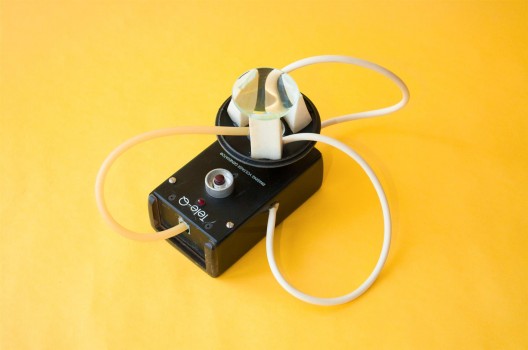
未来推演工厂,《电蚊》(一件违法的蚊子捕捉器),2014(摄影:未来推演工厂)/ Extrapolation Factory, “TeleSquito” (a bootleg mosquito capturing device), 2014. Photo: Extrapolation Factory.
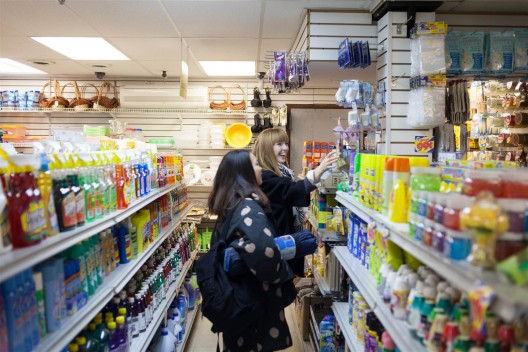
在布鲁克林市中心的“99美分的未来时空扭曲开幕式”的过道上闲逛的购物者,2013(摄影:未来推演工厂)/ Shoppers browsing the aisles at the 99¢ Futures Timewarp Opening in Downtown Brooklyn, 2013. Photo: Extrapolation Factory.
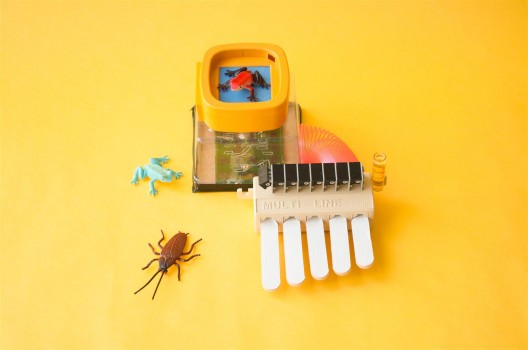
未来推演工厂,《生物乐团》(一个允许使用者构建和分配新声音给小动物的装置),2014(摄影:未来推演工厂)/ Extrapolation Factory, “The Critter Orchestra” (a device allowing the user to compose and assign new sounds to small critters), 2014. Photo: Extrapolation Factory.
Notes
1 In his 1927 manifesto Vers une Architecture (Towards an Architecture), the French architect Le Corbusier famously said, “A house is a machine for living in. Baths, sun, hot-water, cold-water, warmth at will, conservation of food, hygiene, beauty in the sense of good proportion. An armchair is a machine for sitting in and so on.”
